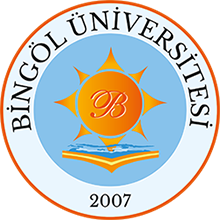Bingöl-Solhan Bölgesi Polenlerinin Özellikleri ve Bakır Malzemelerin Korunmasında Kullanımları
Özet
ÖZET:
Bu çalışmada, bakır metalinin deniz suyunu temsilen %3,5 NaCl çözeltisindeki
korozyonuna polenin inhibisyon etkisi incelenmiştir. Bu koruma yöntemi ile elde edilen
bulgular son zamanlarda yaygın bir şekilde uygulanmaya başlanan aynı maddenin kendi
kendine biriken tek tabakalı film (Polen-SAM) uygulama tekniği ile kıyaslanmış ve
gerçek uygulamada hangi yöntemin kullanılabileceği önerilmiştir.
İnhibitör çalışmasında Bingöl - Solhan bölgesinden toplanan polenin farklı derişimlerin
de (2000, 1000, 500, 250 ve 100 ppm) bakırın korozyon davranışı elektrokimyasal
impedans spektroskopisi, lineer polarizasyon direnci, akım-potansiyel eğrileri, açık devre
potansiyelinin zamanla değişimi gibi elektrokimyasal teknikler ile belirlenmiştir.
İnhibitörlü ve inhibitörsüz ortamlar ile muamele edilmiş bakır yüzeyi taramalı elektron
mikroskobunda, atomik kuvvet mikroskopisi, enerji dağılımlı X-ışını spektroskopisi ile
incelenmiştir. Metal yüzeyinde oluşan filmin yapısı ve oluşum mekanizması Fourier
transform infrared spektroskopisi ile incelenmiştir. Metal yüzeyinde oluşan inhibitör
filminin elektrokimyasal kararlılığı kronoamperometri ve dönüşümlü voltametri
teknikleri kullanılarak incelenmiştir. İnhibitör yönteminin SAM film uygulama yöntemi
ile kıyaslaması için Strateji ve Bütçe Başkanlığı tarafından finanse edilen ve
Yükseköğretim Kurulu tarafından koordine edilen Üniversitelerin Bölgesel Kalkınma
Odaklı Misyon Farklılaşması ve İhtisaslaşması Programı kapsamında, BÜBAP tarafından
desteklenen PİKOM-Arı. 2018.006 No’lu projede aynı yöntemler uygulanarak aynı
koşullarda Solhan Polen-SAM için elde edilen veriler kullanılmıştır.
Elde edilen bulgular, Bingöl - Solhan bölgesinden toplanan polenin hem inhibitör olarak
hem de SAM filmi olarak bakırın %3,5 NaCl ortamındaki korozyon hızını yavaşlattığını
ve iki yöntemin de gerçek uygulamalarda güvenle kullanılabileceğini göstermiştir.
İnhibitör uygulamasında koruma etkinliğinin derişime bağlı olduğu ve derişimin artması
ile korumanın da arttığı belirlenmiştir. Her iki yöntemde de yüzeydeki film termal ve
elektrokimyasal olarak son derece kararlı olup pratik uygulamalarda önemli avantajlar
sağlamaktadır. SAM film uygulamasında daha yüksek inhibisyon sağlanmakla birlikte
inhibitör uygulamasının pratik olması da avantaj olarak değerlendirilmiştir. ABSTRACT:
In this study, the inhibition effect of pollen on the corrosion of copper metal in 3.5%
NaCl solution representing sea water was investigated. The findings obtained with this
protection method were compared with the self-assembling monolayer film (Polen-SAM)
application technique, which has been widely applied recently, and it has been suggested
which method can be used in the practical applications.
In the inhibitor study, the corrosion behavior of copper at different concentrations (2000,
1000, 500, 250 and 100 ppm) of pollen collected from Bingöl Solhan region was
determined by electrochemical techniques such as electrochemical impedance
spectroscopy, linear polarization resistance, current-potential curves, change of open
circuit potential with exposure time. The copper surface treated to the corrosive media in
the absence and presence of the inhibitor was investigated by scanning electron
microscopy, atomic force microscopy, and energy dispersive X-ray spectroscopy. The
structure and formation mechanism of the film formed on the metal surface were
investigated by Fourier transform infrared spectroscopy. The thermal stability of the film
was also determined. The electrochemical stability of the inhibitor film formed on the
metal surface was investigated using chronoamperometry and cyclic voltammetry
techniques. In order to compare the inhibitor method with the SAM film application
method, the data of Solhan Polen-SAM obtained under the same conditions in the
PIKOM-Arı. 2018.006 project, which was supported by BÜBAP, financed by the
Strategy and Budget Directorate and coordinated by the Higher Education Council within
the scope of the Regional Development-Oriented Mission Differentiation and
Specialization Program of Universities, were applied.
The findings showed that the pollen collected from Bingöl - Solhan region, both as an
inhibitor and as a SAM film, reduce the corrosion rate of copper in 3.5% NaCl
environment, and both methods could be used safely in real applications. In the inhibitor
application, it was determined that the protection efficiency was dependent on the
concentration of inhibitor and the protection efficiency increases with the increasing
concentration. In both methods, the film formed on the surface is extremely stable
thermally and electrochemically and provides significant advantages in practical
applications. Although higher inhibition is obtained in SAM film application, the
practicality of inhibitor application was also evaluated as an advantage.
Koleksiyonlar
- Arı ve Arı Ürünleri [18]

DSpace@BİNGÖL by Bingöl University Institutional Repository is licensed under a Creative Commons Attribution-NonCommercial-NoDerivs 4.0 Unported License..













